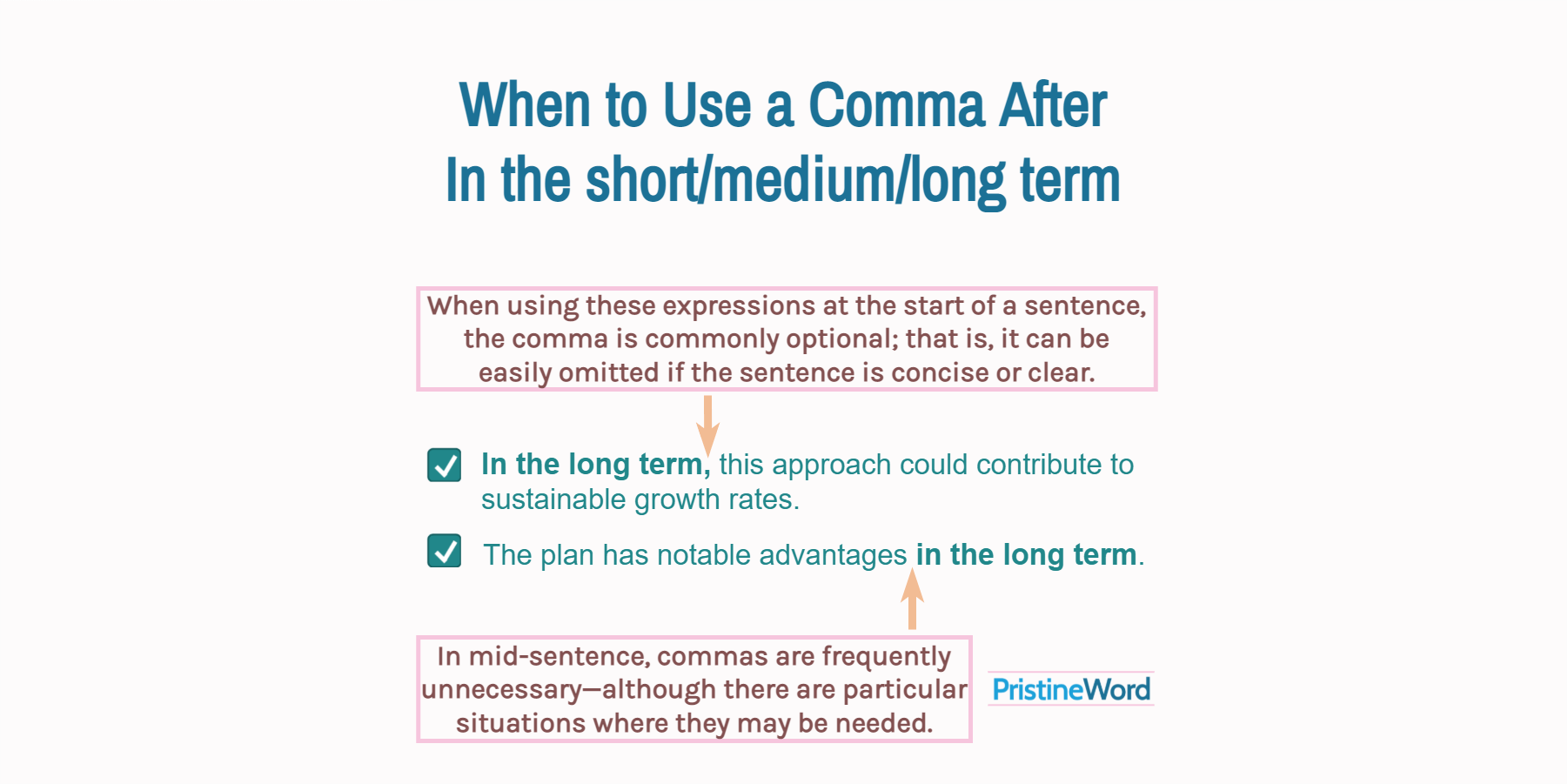When using the expressions in the short/medium/long term, over the short/long term, or for the long/short term at the beginning of a sentence, the comma is commonly optional; that is, it can be easily omitted if the sentence is concise or clear.
When using expressions like "in the short term", "in the long term", or "over the long term" at the beginning of a sentence, the comma is optional if the sentence is concise and clear. When in doubt, add the comma.
In the short term you’ll do well.
In the long term, this approach could contribute to sustainable growth rates.
But always use a comma to avoid confusion or help readers understand challenging sentences.
In the medium term, the comparative performance of different investment strategies should be the key driver of our financial decisions.
In the middle or at the end of a sentence, a comma before or after these expressions is frequently unnecessary—although there are particular sentence structures where they may be needed.
Our business plan has notable advantages in the long term.
Contents
1. Using in the Short/Medium/Long Term at the Start of a Sentence
At the start of a sentence, we can optionally add a comma after the prepositional phrases “in the short term”, “in the medium term”, or “in the long term”.
In the long term, only national institutions can prevent gender-based violence.
The comma can be dropped if the sentence is clear.
In the short term the product is viable.
When in doubt, use a comma to clarify or avoid misunderstanding.
In the medium term, a business cannot prosper without a good administration and efficient management.
Why is the comma optional? At the beginning of a sentence, we usually add a comma after long introductory phrases (more than three or four words). But there are exceptions. When the introductory phrase starts with a preposition, such as "in", the comma can be avoided if the sentence is clear. Follow the same comma guidelines with the expressions "in the long run" and "in the short run".
2. In the Middle or at the End of a Sentence
In the middle or at the end of a sentence, we do not generally use a comma to separate the adverbial prepositional phrases “in the short term”, “in the medium term”, or "in the long term" from the rest of the sentence.
Investing in gold should do well in the long term.
Investing in the short term is often more risky.
But you may need a comma before or after these expressions when using particular sentence structures. For example, a conjunctive adverb should be followed by a comma at the start of a sentence.
However, in the medium term, we won’t be able to meet the needs of our customers without wasting resources.
Also use a comma before a coordinating conjunction, such as “and”, “or”, “but”, etc.
I think that this is the better choice in the long term, but you shouldn’t buy it without financial advice.
Adding a series of coordinate phrases within a sentence is another situation where commas are required.
In the short term, in the medium term, or in the long term, investing may help you ensure present and future financial security.
3. Commas with 'Over the Long/Short Term' and 'For the Long/Short Term'
Follow the same comma policy with the expressions “over the short term”, “over the long term”, “for the short term”, and “for the long term”; thus, at the beginning of a sentence, the comma is optional if the sentence is clear.
Over the long term, those changes are going to cost us money.
Over the short term this is the best choice.
Commas in mid-sentence are frequently unnecessary, although they may be required with particular sentence constructions.
Our company is investing in human resources for the long term.

